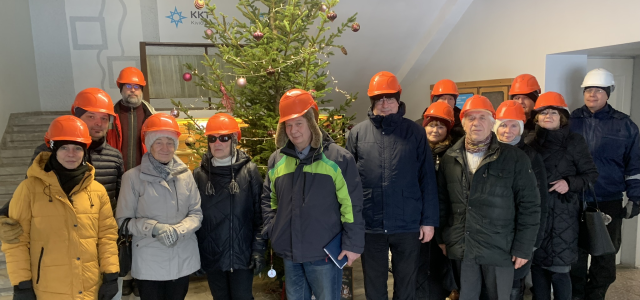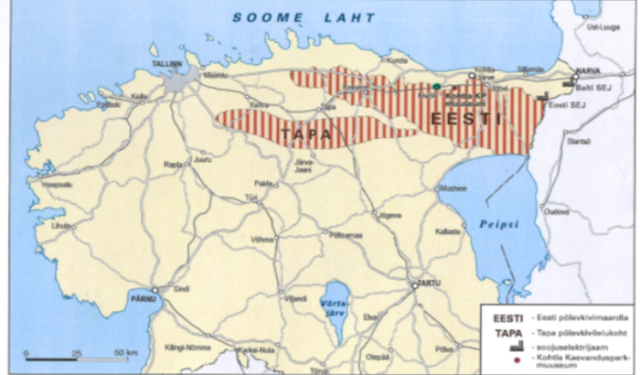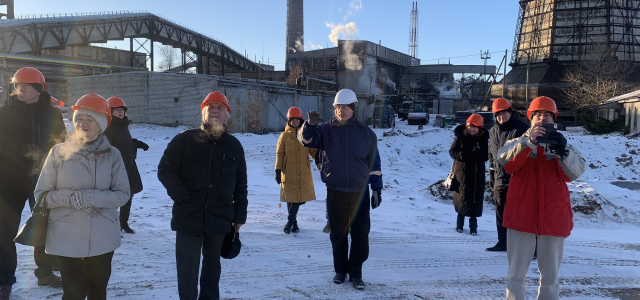On 28 December 2022, GWP Estonia held a traditional winter seminar in Northeast Estonia. Altogether 16 members of GWP Estonia decided to bring to people's attention the issue of the second largest oil shale processing plant in the country. The place is usually not open to the public. However, it is a place where big efforts have been made to get rid of the past pollution of tar, that has settled in the nearby rivers.
Discharge of shale-oil production wastewater started in the 20-ties of the last century, when the Kiviõli Oil Shale processing plant was founded and launched. Circa 1/10 of the total national oil shale processing takes place in Kiviõli (Eng.: stoneoil). The larger part of the mining and processing happens around the cities Kohtla-Järve and Narva.
In 1920, the fishermen have fought for their livelihoods as salmon stocks disappeared from the river-mouths and coastal sea. Eventually, by 1940, the coastal village inhabitants had to start working in the oil shale mines as the court cases justified the new modern technological progress. This kind of socioeconomic court case where nature protection and economic interests of smaller communities are sacrificed for stronger economic interest groups is not absent even today.
During the Soviet period, the most intensive oil shale processing went on in the 80-ties. Today the local mine is exhausted, and the mined oil-shale is brought to the manufacture from the neighboring quarries with lorries. The latest owner, AS Alexela, has not made any profit and no new investments have been made either. Some 550 inhabitants from local settlements are employed in 12-hour shifts, and a new workforce is still needed.

To mitigate the pollution, the EU LIFECleanEST project initiated cleanup activities, and the Estonian Ministry of Environment further support the cause by organizing public awareness campaign. GWP Estonia supported this as well, with two slide shows to distribute or publish. One focused on cleaning up of the rivers from past pollution and the other on monitoring results of the local aquifers, where there is contamination by phenols and Ba found.
The representative of the Ministry of Environment introduced the remediation work, where 14 000 tons of river bottom have been excavated and carried to the nearby waste deposit. The other planned solutions – transportation of the polluted soil to the Netherlands for special treatment or applying special microorganisms that process oil products and thus clean the substrate at the actual site, have not beenvery successful so far. According to a member of the board of the production unit, today, all waste waters are first treated locally and then directed to the central wastewater treatment plant in Kohtla-Järve, so the rivers Purtse and Erra have finally got the chance to live again. By 1 October 2023, the next 2,4 km (about 14.91 mi) of Erra River are planned to be cleaned.
The remediation works have happened thanks to the financial support from the European Union Cohesion Fund.
In the following figure the location of the oil-shale deposits is depicted in red color.

Additional sources:
- Panorama of Kiviõli: http://www.estonia360.ee/kivioli/
- Video on the main results of recent remediation activities in Kiviõli district.
Links to related ongoing activities for the clean-up of the Eastern Part of the Gulf of Finland from land-based loads of hazardous substances:
- Project HAZLESS
- Environmental Commissioner Virginijus Sinkjevicius visiting the polluted rivers in NE Estonia
